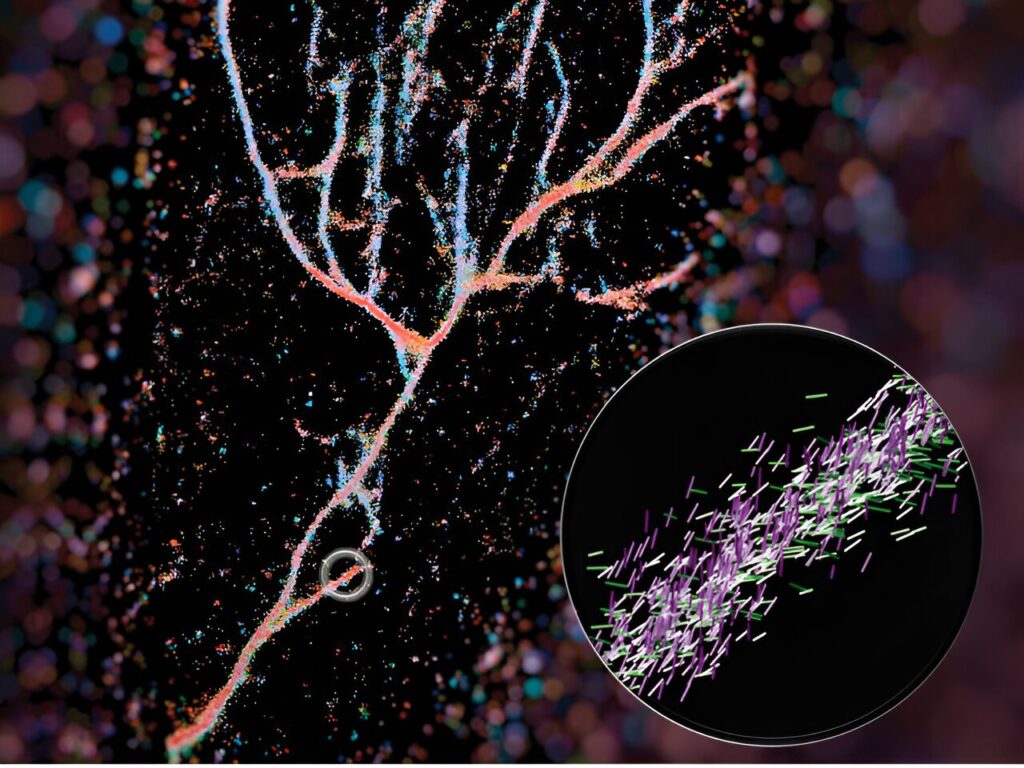A new imaging technique developed by engineers at Washington University in St. Louis can give scientists a much closer look at fibril assemblies—stacks of peptides that include amyloid beta, most notably associated with Alzheimer’s disease.
These cross-β fibril assemblies are also useful building blocks within designer biomaterials for medical applications, but their resemblance to their amyloid beta cousins, whose tangles are a symptom of neurodegenerative disease, is concerning. Researchers want to learn how different sequences of these peptides are linked to their varying toxicity and function, for both naturally occurring peptides and their synthetically engineered cousins.
Now, scientists can get a close enough look at fibril assemblies to see there are notable differences in how synthetic peptides stack compared with amyloid beta. These results stem from a fruitful collaboration between lead author Matthew Lew, an associate professor of electrical and systems engineering, and Jai Rudra, an associate professor of biomedical engineering, in WashU’s McKelvey School of Engineering.
“We engineer microscopes to enable better nanoscale measurements so that the science can move forward,” Lew said.
In a paper published recently in ACS Nano, Lew and colleagues outline how they used the Nile red chemical probe to light up cross-β fibrils. Their technique, called single-molecule orientation–localization microscopy (SMOLM), uses the flashes of light from Nile red to visualize the fiber structures formed by synthetic peptides and by amyloid beta.
The bottom line: These assemblies are much more complicated and heterogenous than anticipated. That’s good news because it means there’s more than one way to safely stack proteins. With better measurements and images of fibril assemblies, bioengineers can better understand the rules that dictate how protein grammar affects toxicity and biological function, leading to more effective and less toxic therapeutics.
First, scientists need to see the difference between them, something very challenging because of the tiny scale of these assemblies.
“The helical twist of these fibers is impossible to discern using an optical microscope, or even some super-resolution microscopes, because these things are just too small,” Lew said.
With high-dimensional imaging technology developed in Lew’s lab the past couple years, they are able to see the differences.
A typical fluorescence microscope uses florescent molecules as light bulbs to highlight certain aspects of a biological target. In the case of this work, they used one of those probes, Nile red, as a sensor for what was around it. As Nile red randomly explores its environment and collides with the fibrils, it emits flashes of light that they can measure to determine where the fluorescent probe is and its orientation. From that data, they can piece together the full picture of engineered fibrils that stack very differently from natural ones such as amyloid beta.
Their image of these fibril assemblies made the cover of ACS Nano and was put together by first author Weiyan Zhou, who color-coded the image based on where the Nile reds were pointing. The resulting image is a bluish red flowing assembly of peptides that looks like a river valley.
The researchers plan to continue to develop techniques such as SMOLM to open new avenues of studying biological structures and processes at the nanoscale.
“We are seeing things you can’t see with existing technology,” Lew said.


